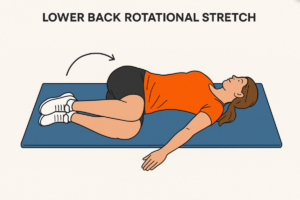Are You Looking For Help With Pelvic Health Issues?

Up and Running PT
Physical Therapist
Pelvic Health Specialists
Are You:
- Tired of urine leakage (incontinence) with running, jumping or even just daily life?
- Noticed an increase in urinary urgency and constantly looking for the nearby toilet or having disrupted sleep due to night time bathroom trips?
- Moms (new and experienced): Worried about postpartum back, hip or pelvic pain that doesn’t go away no matter what you do?
- Experiencing constipation but you know you are drinking enough water and your doctor’s only solution is to offer you medication?
- Finding sex painful or uncomfortable?
- Having trouble keeping up with your kids and feel you’re missing out on life?
- Lacking confidence because you know your core just isn’t working properly, you have a Diastasis Recti?
- Frustrated that other approaches haven’t worked (even if it was another PT) or confused about what to try?
- Are you looking for a long-term and natural solution that will get rid of these problems for good (without medications or surgery)?
Many women and men in Fort Collins, Colorado suffer unnecessarily because they’re told…
- There is nothing you can do because this is a “natural part of aging”.
- Your Doctor/OBGYN says "Don’t do anything but rest for 6 weeks then go ahead and get back to your regular activity". Then weeks, months, even years go by and you’re still struggling.
- “Just do some YouTube workout videos and you’ll get back in shape in no time” but then those workouts cause pain and leakage and you feel awful afterwards and so discouraged.
- Having pelvic floor issues is a normal part of giving birth.
- A lot of women have pain or abdominal separation after giving birth and “everyone leaks” or has bladder control issues as they age.
- If you take some pain killers everything will be fine.
- Medicine, surgeries or “just dealing with it” are the only options.
- Just “wait and see”, all the while you are watching your life pass you by.
The Truth Is...
- Resting it doesn’t change anything. You might get a small temporary relief, but then when you get active again you’ll still be suffering from pelvic pain, leakage and other symptoms (I bet you’ve already experienced it!).
- While it’s very common, It’s NOT Optimal!
- Pain pills are addicting, dangerous, and can cause a lot of other problems with your body.
- Medicine, surgery or injections are not the only option. They’re just the only options your doctor can offer you.
At Up And Running PT, We Help Active Adults And Athletes Get Back To Workouts and Sports They Enjoy without surgery, stopping activities they love, or relying on pain medicine. When It Comes To Solving Pelvic Pain, Troubleshooting Urinary and Bowel issues, and Ensuring a COMPLETE Recovery...
You must choose the right provider for your health. If you don’t, you could end up getting surgery (when it could have been avoided), being dependent upon medications or painkillers… or living with steadily worsening symptoms the rest of your life. Our certified pelvic physical therapists manage the symptoms of pelvic floor dysfunction with cutting-edge exercises that can help to reduce symptoms quickly and increase patient control over their pelvic floor. Please call 970-480-7705 for pelvic physical therapy appointments.
Getting the “least-invasive”, most natural treatment is VITAL to you stopping your leakage and urgency, abdominal separation issues, sexual dysfunction, pelvic floor problems or post-surgical or postpartum hip/back/pelvic pain and keeping it from ever coming back.
Working with a provider who understands that the entire body works together is vital to your recovery. You are more than just your pelvis. We must address changes in the neck/back/diaphragm/core/pelvic floor/pelvis, posture, strength and how we’re using our bodies to fully recover. It’s much, much more than just Kegels!
To ensure a full recovery, we have to not just treat the symptoms. You must have an expert provider who is willing to get to the ROOT CAUSE of your symptoms and dysfunction. That’s when you’ll get a PERMANENT solution to your pelvic problems.
At Up and Running PT we’ve created a 3 step process to get rid of your pelvic symptoms AND make sure you don’t have to deal with them ever again.
STEP #1 - WE WANT TO LISTEN TO YOUR STORY
Our medical system is frustrating. You wait weeks, sometimes months, for an appointment, only to get to talk to the doctors for 10 minutes before they have to run to the next patient and you’re left sitting there wondering, “What just happened?”
Even most physical therapy clinics operate this way. They’re not attentive, they’re fast-paced, and your therapist doesn’t have time to learn what goals are important to you, or to work with you one-on-one. That’s why we operate so differently!
And that’s why our first step is to listen to your story.
After successfully working with many people with pelvic issues, we know that no two people are alike. Each person has a different body, a different history, and different types of pain and symptoms.
That is why our first step is to have an open conversation and time for you to tell your story. That way we get a deep understanding of what’s going on not just with your body, but also how it’s impacting your life.
STEP #2 - FIND OUT WHY YOUR SYMPTOMS STARTED
Many people have a diagnosis, or medical term for what’s going on with their body. Maybe their doctor gave it to them, maybe tests showed the diagnosis, or maybe you found it online.
Perhaps you’ve been given the label of Prolapse, Diastasis Recti, Erectile Dysfunction, Pelvic Floor Dysfunction, Vaginismus or Vulvodynia, Incontinence, Sacroiliac (SI) Joint Pain or Hip/Back/Pelvic Pain.
You could have been told that your only choice was to rest, take medicine, or give it time.
Sometimes, those things bring temporary relief, but they’re not addressing what CAUSED the problem in the first place.
Every person’s cause of pain or symptoms is different. No one has the exact same problem caused by the exact same thing as another person.
Our goal at Up and Running PT is to find that original cause of your problem, so not only does your pain go away, it STAYS AWAY!
Step #3 - GET RID OF THE PROBLEM & KEEP IT FROM COMING BACK
This is when the big transformations occur. We develop a personalized plan that allows you to…
…get back to exercising (yes, even running and jumping!) without fear of pain, stiffness, or bladder control issues coming back.
…be able to play with your kids, lift, and carry them with no problems.
…return to intimacy with your partner without fear of pain or inability to perform.
…get back to your active lifestyle you love (yoga, running, tennis – whatever you love to do!).
…feel strong, confident and even sexy again as your body heals from that Diastasis Recti/Abdominal Separation and recovers its core strength fully.

Our best clients are those who are motivated and ready to win back their active life. (Even if they feel stuck right now!)
Want to know more about our availability and costs before making any commitment to coming in?
Sincerely,
Dr. Stephanie Hope, PT, DPT & Dr. Stephanie Boyce, PT, DPT
Recent Blog Posts By Up And Running Physical Therapy

Can Plantar Fasciitis Shoes Really Stop the Foot Pain?
Foot pain can throw off everything—from your morning run to walking across the kitchen. If you’ve got a sharp, stabbing feeling in your heel, chances are plantar fasciitis is the culprit. But can specialized plantar fasciitis shoes really stop the pain?
Let’s look at how these shoes work and whether they’re worth your time and money.
If you’re trying to get back to pain-free movement without giving up your routine, you’re in the right place. Let’s break it down in a way that actually makes sense.

Should I Workout When Sore or in Pain? #1 Risk Factor for Low Back Pain
We hear this question all the time: “Should I workout when sore or in pain?” However, the answer isn’t always clear-cut.
At Up and Running Physical Therapy, we see active adults across Fort Collins doing all the “right” things—hitting Spring Creek Trail, lifting at Miramont, summiting Horsetooth—and still ending up sidelined with low back pain.

Lower Back Stretches You’ll Wish You Knew Sooner
Lower back pain can sneak up on you and wreck your day. Whether you’re running, lifting, or just sitting too long, that ache can make everything harder than it needs to be. But how do you find the lower back stretches that actually help?
You deserve real relief that helps you move freely and feel strong again. And the right lower back stretches, simple moves that can change how your body feels and performs, can get you there.
In this guide, you’ll discover stretches that target those tight, sore spots fast. You’ll also learn when and how to use them so you can get back to doing what you love.
What Other People Just Like You Are Saying About Up And Running Physical Therapy In Fort Collins, CO...
Kelly ODonnell
“I brought my young adult daughter to Up and Running for Pelvic floor Therapy with Stephanie Hope. My daughter deals with a lot of chronic pain and Stephanie’s knowledge of my daughter’s conditions and empathy set my daughter at ease right away. Stephanie is an amazing PT and great resource for us. She never makes you feel rushed and takes time to answer all of our questions. We are so grateful to have found her and my daughter looks forward to continuing her therapy work with Stephanie!”
Evan Moore
“Stephanie and the team at Up and Running were very helpful and always friendly during my PT visits. The staff members were always in a good mood and seemed genuinely proud and happy to be helping their clients. Up and Running uses the latest technology for communication and workout routines. This made scheduling, workout reminders and accountability easy for me. I’m looking forward to a strong softball season after the progress made utilizing the tools and workouts learnt at Up and Running Physical Therapy!”
